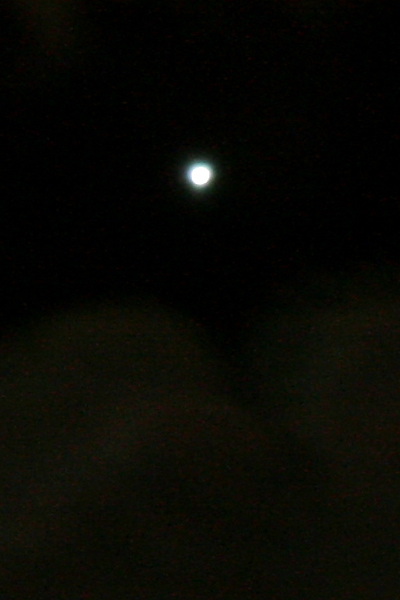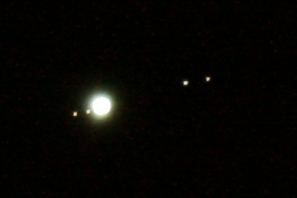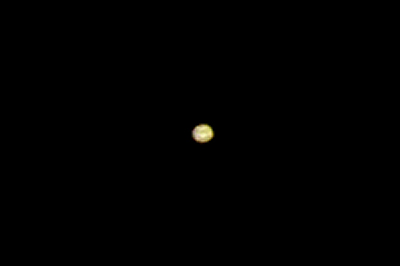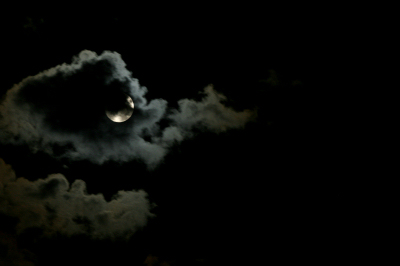
It only happens a few times a century. First it was Callisto, followed by Io. Then, Europa and Ganymede briefly "kissed" before meeting their fate. One-by-one the the four Galilean moons of Jupiter disappeared. The first two went around the back; the second set across the Jovian face. Between 9:43p and 11:28p last night, Jupiter appeared to be moonless.
In the photo above, nothing looks amiss. Our own moon bathes the clouds with light while Jupiter peeks out from an opening in the lower-right. But if Jupiter is magnified, it seems strangely naked:

In comparison, here is how it looked in an earlier post, at the same zoom level:

At that time, all four Galilean moons were quite visible, in contrast to the view yesterday.
Note that the Jovian disk is overexposed to show the moons. In a differently exposed photo from last night, I was able to resolve some markings on the planet itself (more visible here thanks to contrast enhancement and a 2x digital zoom):

Of course, the resolution is not high enough to see the disks of Europa and Ganymede in front of the large planet -- or much of anything else for that matter -- but IMHO it's not bad for an ordinary telephoto lens and photographic tripod.
As a bonus last night, I also captured a fun shot of a baby dragon practicing his puffs. :-)


No comments:
Post a Comment